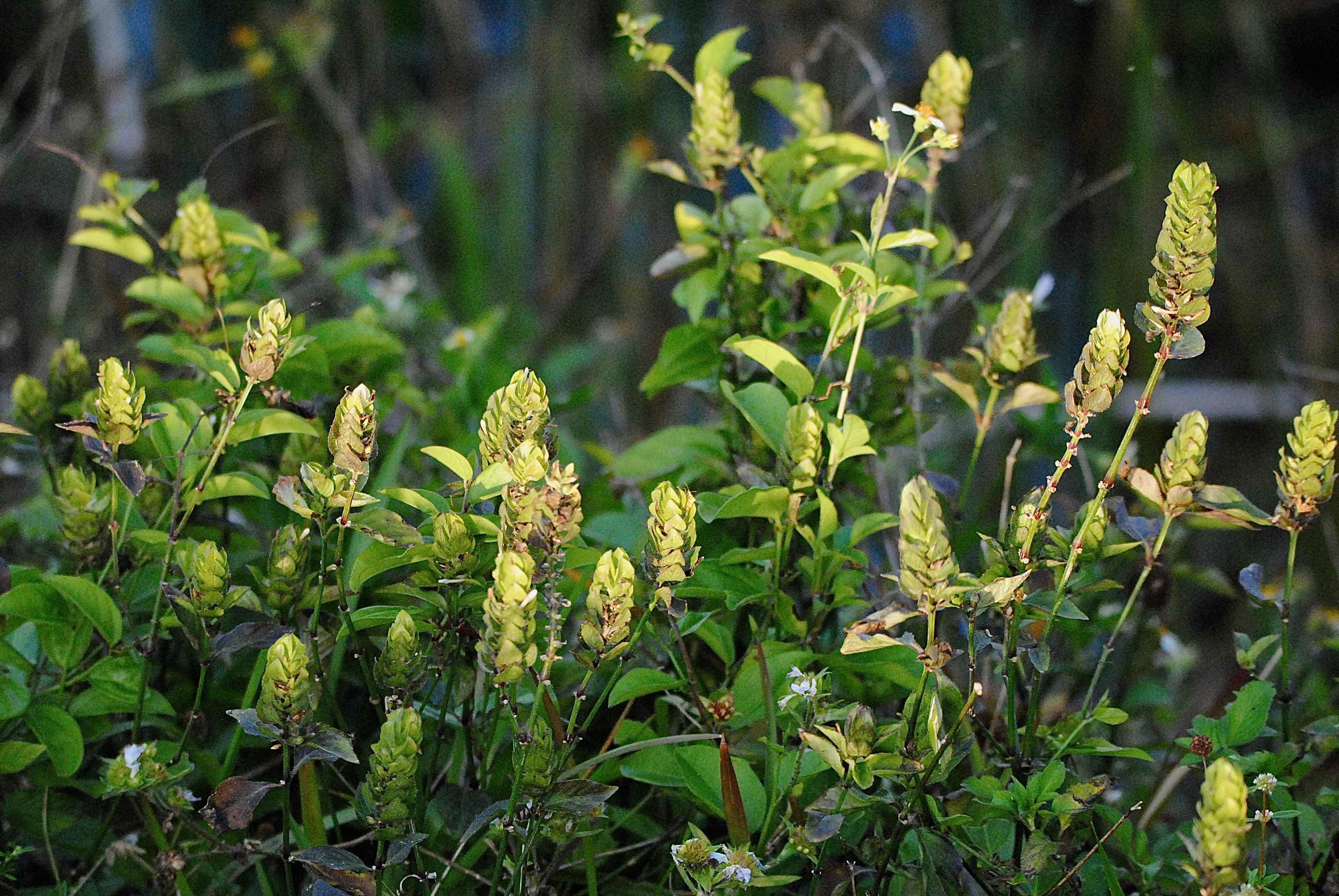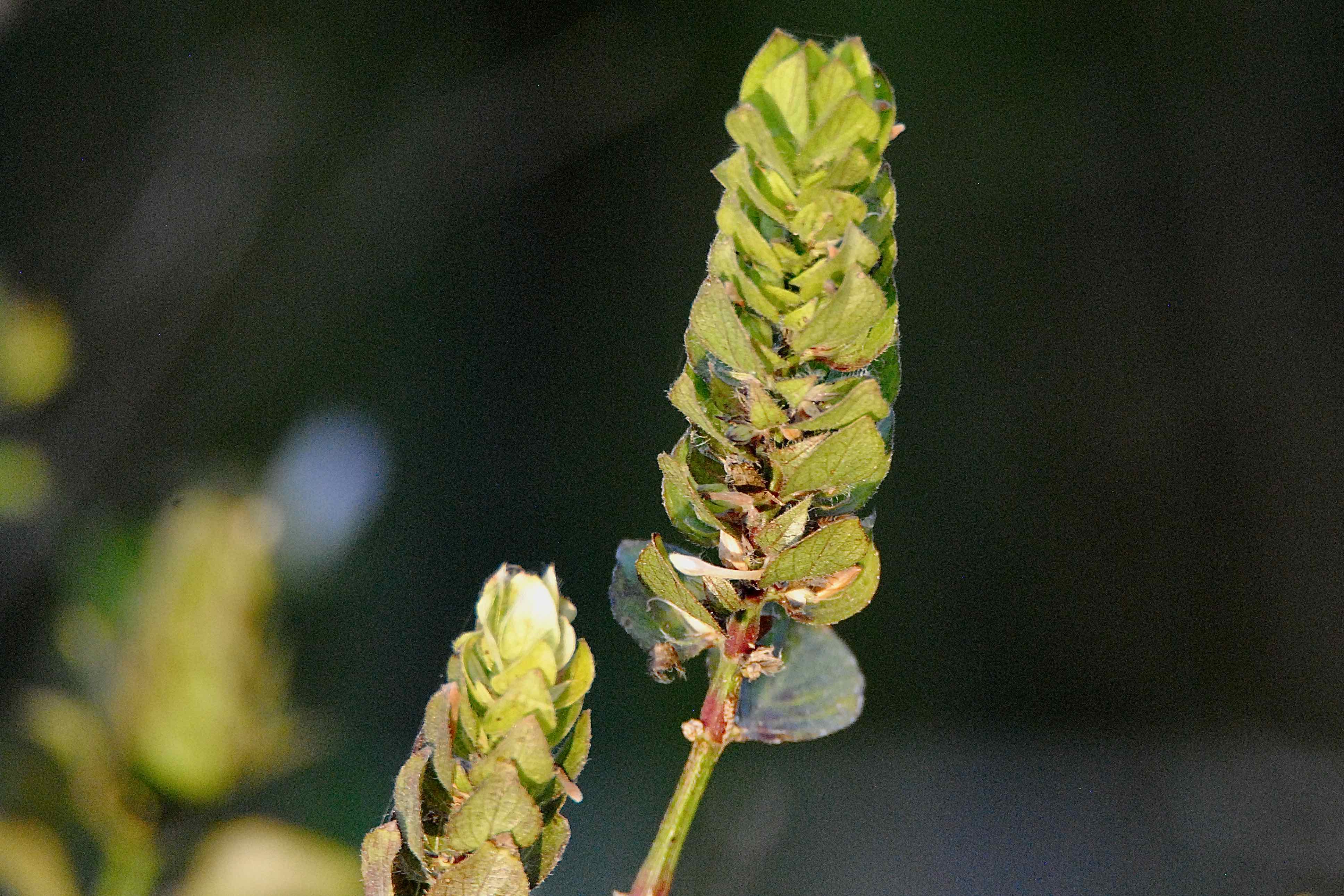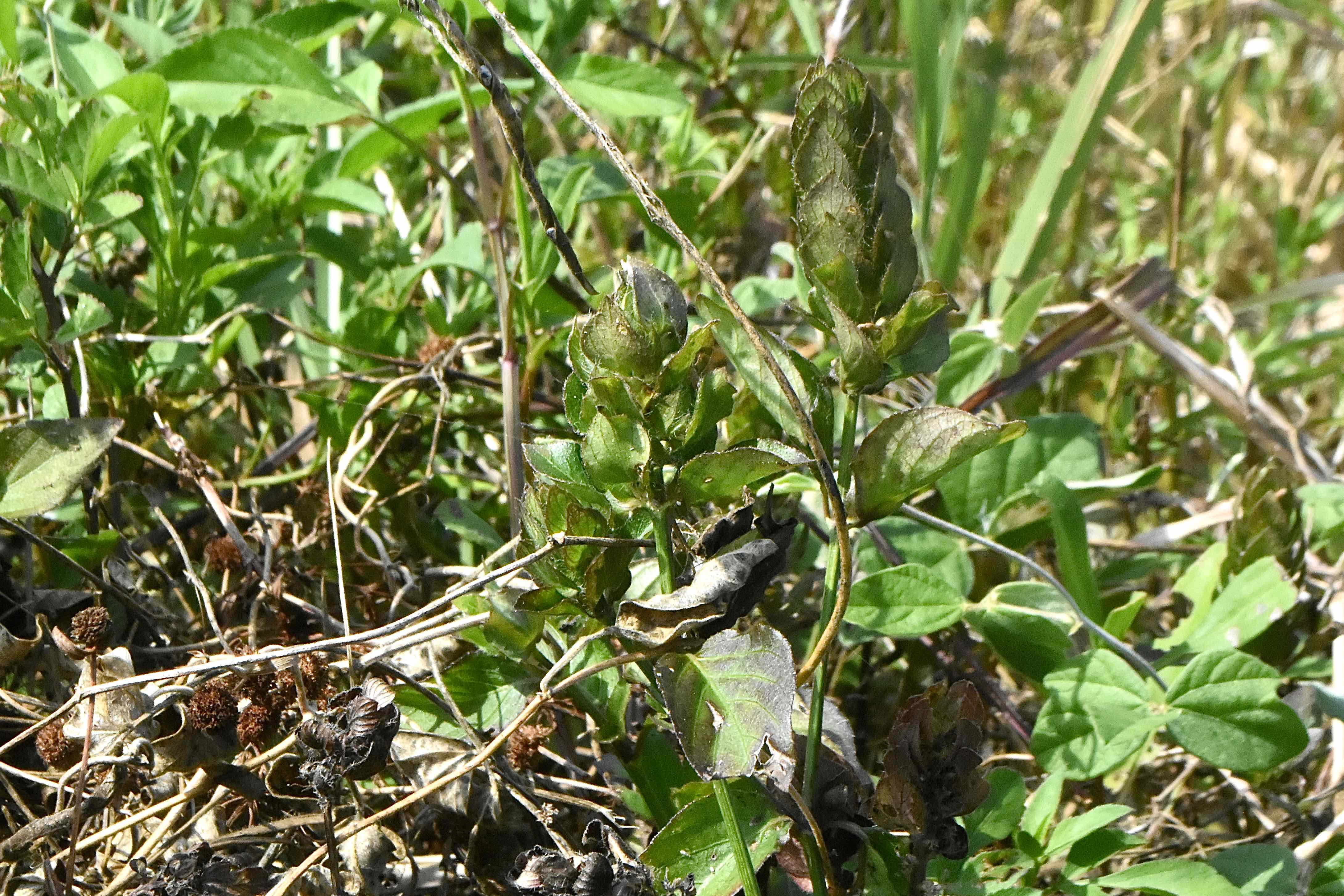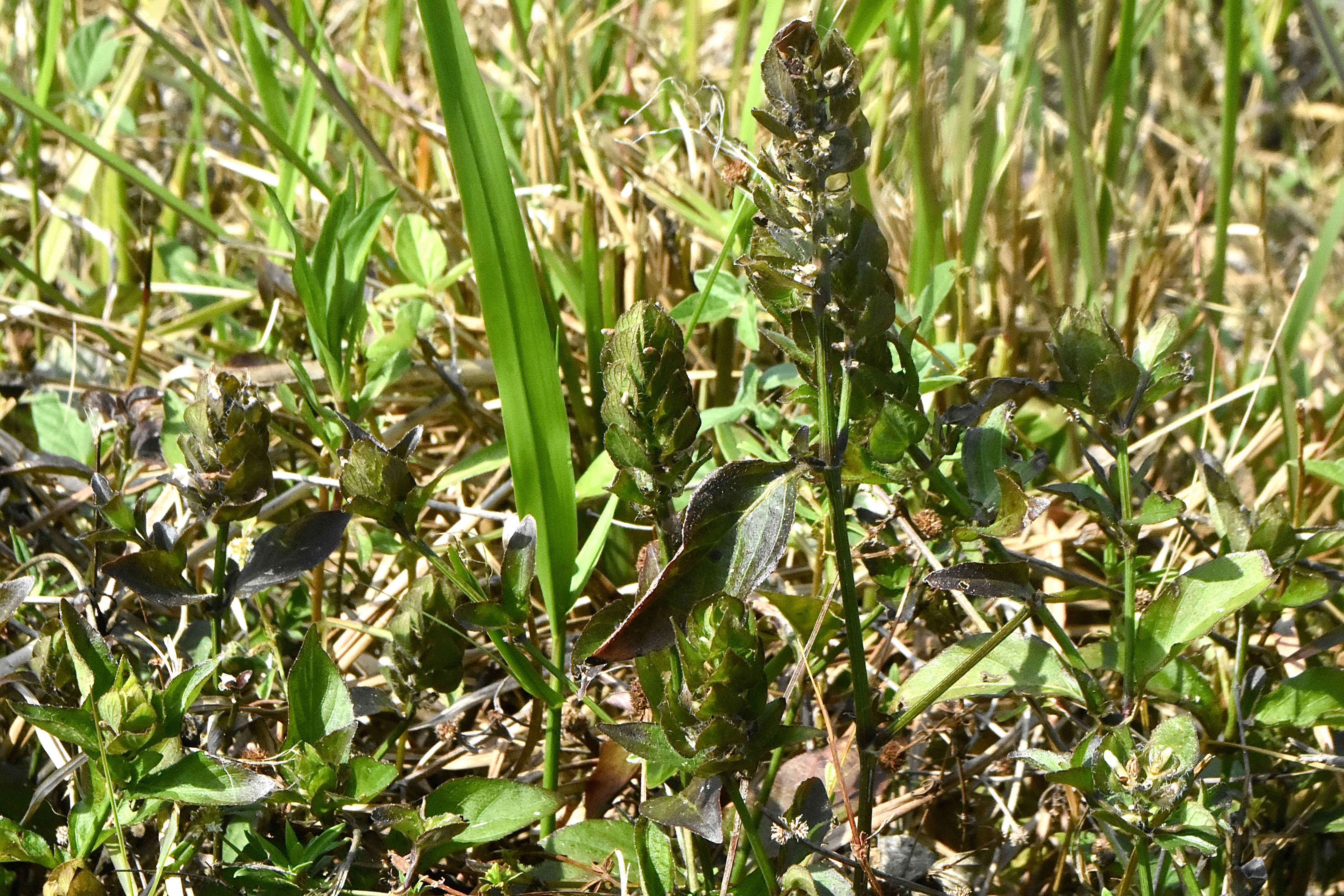
Browne's blechum, photographed at the Loxahatchee National Wildlife Refuge, Boynton Beach, Palm Beach County, in May 2016.
You might know Browne's blechum, Ruellia blechum, as green shrimp plant. You might have seen it sold in the nursery section of a big box store. You even might have bought a few plants for your yard.
It's a native of Mexico, Central America and South America that's spread to warmer places around the globe, including much of the Pacific and parts of Asia and Australia through the ornamental plant trade. Unfortunately, it's also escaped into the wild and become something of a weedy pest.
It's found in Florida's Peninsula as far north as Alachua County and also in Louisiana, according to the U.S. Department of Agriculture's PLANTS database. The Florida Exotic Plant Pest Council lists Browne's blechum as a Category II invasive, meaning it's spreading in the wild and is being monitored to see if it's doing any ecological damage. The classification as an invasive doesn't have force of law, doesn't prohibit the sale of the plant but it should give consumers pause before buying it.
The most notable feature of Browne's Blechum is its unusual, almost geometrically shaped inflorescence, or flower spike. The flowers themselves are small and white to a pale violet in color. If you look at the photo on the Institute for Regional Conservation page, link below, you'll see the flower bears a resemblance to wild petunias, which isn't surprising since they're both members of the same genus.
Which brings us to a taxonomic note: if you do any research on this plant, you'll see it frequently referred to scientifically as Blechum pyramidatum. That's the old name. It has been reclassified as part of the genus Ruellia, which is the genus to which wild petunias belong. Pyramidatum is, or was, a reference to the shape of the flower spike.
Which brings us to the next question: what is a blechum? Apparently it stems from the word, blechon, which is a mash-up of Latin and Greek and refers to wild pennyroyal. The word appears in Pliny's Natural History, the ancient world's answer to Wikipedia. The Browne in question is Patrick Browne, an 18th century Irish physician and botanist who studied and wrote about the natural history of Jamaica, one of the places where the plant is native. So Browne's blechum is really shorthand for Patrick Browne's wild pennyroyal. Note: the flower heads of the wild pennyroyal found in Florida somewhat resemble those of Browne's blechum, but the leaves not at all.
In any regard, Browne's blechum is an upright or clambering plant, growing to about 20 inches tall. It has oval-shaped leaves that are wide at the base and taper to a point at the tip. They are arranged opposite each other along the stem. It reproduces by seed and by broken fragments that root when finding soil. It likes open fields, roadsides and disturbed areas.
Browne's blechum is considered an invasive in the Philippines, but it is used there extensively in traditional medicine to stop bleeding, treat intestinal parasites, vomiting with blood, flu and measles. Some research shows it may have promise as alternative treatment for diabetes because it reduces blood sugar.
Other names for Browne's blechum include blackweed, wild hops and John bush. It is a member of Acanthaceae, a family of 2,500 mostly tropical plants.
Arthur R. Marshall Loxahatchee National Wildlife Refuge



